Types of Topographical Survey: From the hydrographic point of view a Topographic Survey consists of a series of tasks carried out with the aim of determining the composition of those parts of the earth’s surface which emerge from the water.
It includes the coastal relief and the location of permanent natural or artificial objects and features. Such information is partly obtained by determining the position of points on the ground, which allows their shape as well as details of the features to be depicted, enabling their location and description to be charted. Other sources of data include remote sensing processes from aerial photogrammetric information, other airborne sensors or satellite imagery products.
In these cases, it is necessary to create ground control points in order to adjust the information to the reference frame in use.

Types of topography
The term topography often has other applications, for example in oceanography it is used to depict seafloor surfaces or the boundaries of certain water mass characteristics. All these meanings share a common external description of surfaces covering a physical body.
This chapter deals with the methods applicable to the description of coastal features as part of hydrographic surveys, particularly with regards to the appearance of the ground and the location of detail.
It includes coast lining and location fixes, generally related to the high water line for marine surveys, the information on these areas ranges from this line to the low water line, as well as conspicuous coastal features which allow the mariner to position himself relative to nearshore dangers.
Except in harbors or coastal areas, where operations or projects are planned or expected to be undertaken, it is necessary to make detailed observations of coastal formations by topographic survey methods.
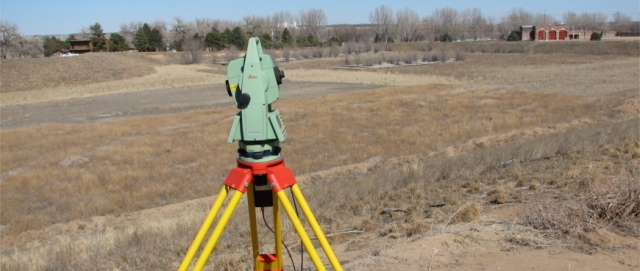
Topographic survey
In some cases, much of the topographic surveying may be undertaken via photogrammetric processes. In these surveys, control is achieved by positioning details on the ground which may be identified in images.
Additionally, it is necessary to add information which may provide a proper interpretation of the structure of coastal features.
In coastal topographic surveys, it is also essential to locate all aids to navigation within the surveying area; if required, the horizontal and vertical geodetic control network should be made denser. In all these cases, it is essential that the reference system for the topographic survey co-ordinates, the geodetic control, and aids to navigation (reference stations, lights, beacons, etc.) is consistent with the reference system used for the rest of the hydrographic survey.
This precaution is fundamental for the mariner, who positions himself with the use of the aids to navigation and other coastal details, to be able to rely on the charted depths at every fix.
This chapter will deal first with the methods applied to land surveying, then it will deal with remote sensing ranging from photogrammetric processes to satellite imagery.
Triangulation survey
It is a technique based on principal angular measurements. Before the middle of the 20th century, it was the most common method for establishing geodetic control networks and for sole calculation of conspicuous points, marks and other aids to navigation or photogrammetric ground control points. Since the 1960s Electronic Distance Measuring equipment (EDM) or Electro-Optical Distance Measurement (EODM) has superseded the above methods. More recently they have been replaced by satellite methods, particularly since a permanent global coverage was established in the 1990s
The earliest form of triangulation for hydrographic purposes consisted of a series of observations, with a relatively small number of measured sides (baselines) and a large number of angular measurements, which are showed here with the observed directions. Such a diagram provides a great deal of redundancy; each double-diagonal quadrilateral has three angular verifications created by adding or subtracting values. Nevertheless, the network scale is still determined by the baselines.
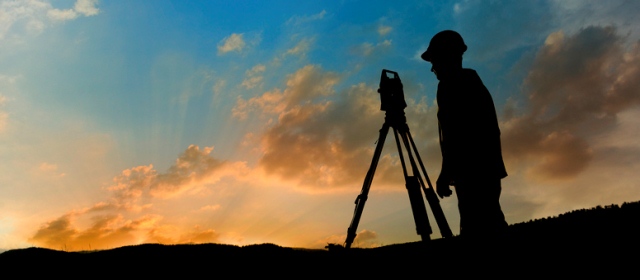
GNSS observations
In old unconnected geodetic controls, position and orientation were established from astronomic observations of latitude, longitude, and azimuth in a datum. Nowadays, if marks are used from these kinds of networks, it is usually necessary to re-observe and recalculate via GNSS in order to convert coordinates into a universal system like WGS 84.
In general it should be noted that distances from the baselines could be measured within accuracies ranging from 1ppm to 3ppm, directions from ± 0.5″ to ± 2″, and transition from a base to another (that is, the contrast between the base transfer by triangle resolution and the other measured base) could normally be checked within 20 ppm and 40 ppm.
These limitations should be taken into account when trying to adjust an old triangulation network to a present framework via GNSS observations, with distances of 200 or 300 km there can be differences of several meters (2 or 3).
Besides tolerating differences of these orders, it is necessary to have a sufficient number of well-distributed connections to common datums and of datum conversion algorithms in order to absorb the distortions typical of the old networks.
Notwithstanding the above statement, densification by GNSS of datums with fixed co-ordinates computed from old triangulations should be avoided; such cases often lead to distortions and inaccuracies in the final results. If unavoidable due to the need to keep the coordinates of an old datum, it will be necessary to adopt very particular computation strategies and the limitations of the values obtained must be stated at an early stage.
Boundary survey
The most common and well-known surveys conducted today are boundary surveys, mortgage surveys, and topographic surveys. An ALTA survey, which is actually a shortened title for ATLA/ACSM, combines elements of all three with a set of standards put forth jointly by the American Land Title Association and the American Congress on Surveying and Mapping.
ALTA surveys are most commonly used for commercial properties; by having a universal standard, companies can assure themselves of the level of thoroughness and be confident when the results are guaranteed by an ALTA survey.
Boundary survey definition
Boundary Surveys are exactly what the name describes: a survey to establish the true boundaries of a given property.
Through previously recorded markers and the establishment of new landmarks, a surveyor will establish the true boundaries of a property and then mark the corners and lines of the plot, using markers such as iron rods, pipes or concrete monuments in the ground, or nails set in concrete or asphalt. In the past, trees, piles of stones other less permanent markers were used, which led to confusion when the markers were either destroyed or changed.
Boundary and topographic survey cost
While most people think of land surveys in the most basic sense—that is, the drawing of the boundaries of property—there are actually many different ways of surveying that service many different industries. Property surveys are a large part of the business, but there are also surveys and surveyors that help the construction industry, the environmental sector, and many others.
The kinds of surveys that are conducted would surprise most people, and some things that you might think are surveys aren’t surveys at all. Instead of the standard two-dimensional measuring from one point to another, today’s surveys not only measure the land, but also the air and water above and below us. Let’s take a quick look at a sampling of different types of land surveys available.
Types of topographical survey
Mortgage survey
Mortgage Surveys are simple surveys that for the most part determine land boundaries and building locations. They are usually required by title companies and lending institutions when they provide financing to show that there are no structures encroaching on the property and that any structures on the property meet current zoning and building codes.
It is important to ensure that you are getting an officially licensed mortgage survey performed by a licensed land surveyor, and not a mortgage inspection, which is a substandard survey that does not adhere to any set standards and is not regulated or accepted as an official land survey.
Topographic Surveys are land surveys that locate natural and man-made features on a piece of property—for example, buildings, improvements, fences, elevations, land contours, trees, and streams.
These are measured for their elevation on a particular piece of land and presented as contour lines on a plot. Topographical surveys are sometimes required by the government. Engineers and architects also use topographical surveys to aid in the design of improvements or developments on a site.
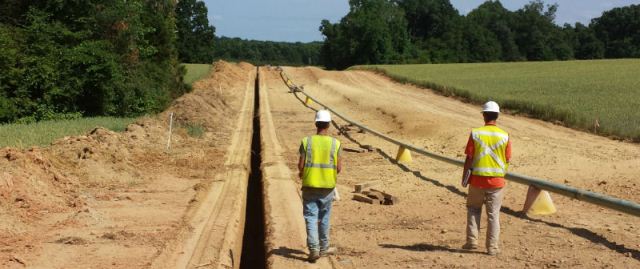
Construction survey
One of the largest and most rapidly growing areas of land surveying is in the construction industry. Surveys are crucial tools from inception and planning to actual construction and maintenance afterward.
Most construction surveys fall under the discipline of civil engineering, which may require additional degrees and certifications in order to conduct.
All construction projects begin with the Plot Plan or Site Plan, which set out the plan for the entire project including all existing and proposed conditions on a given site.
As-Built Surveys are conducted several times during a construction project to verify for local and state boards that the work authorized is being completed to the specifications set on the plot plan.
A Foundation Survey is a type of as-built survey that collects the positional data on a foundation that has been poured and is now cured.
Foundation surveys are done to ensure that the foundation has both been constructed in the proper location and has been built in the proper manner according to the plan.
For existing structures, a Deformation Survey determines if a structure or object is changing shape or moving. By the taking of three-dimensional positions on specific points on an object, then letting a period of time pass before retaking and measuring the points, it can be determined whether a structure is shifting or moving, and by how much.

Hydrographic survey
Although it may seem counter-intuitive, land surveyors are also responsible for performing Hydrographic and Bathymetric Surveys. Hydrographic surveys collect data relating to any body of water, and the data collected may include the water depth, bottom contours, the direction of the current, observing and recording high watermarks and water levels, as well as location of fixed objects and landmarks for navigational purposes.
They can also be conducted to gather information for engineering or resource management purposes, such as hydropower plants. Bathymetric surveys deal exclusively underwater and map the seabed profile.

Geodetic survey
Geodetic Surveys fall under both the land and water category, as they map out the shoreline. Thomas Jefferson commissioned a geodetic survey in 1807 as the Survey of the Coast. Progress on the survey moved slowly at first as they did not even have the proper instruments to perform the survey until 1815.
It still exists today as the National Geodetic Survey, and its responsibilities now include the interior lands of the United States as well as its coasts.
Wetland delineation
Wetlands Delineation and Location Surveys belong in a category all on their own; they are performed when construction work is being planned on or near a site containing defined wetlands. Local, state, or federal regulations vary, but wetlands are usually classified as areas that are completely inundated with water for more than two weeks during the growing season.
Boundaries of wetlands are determined by observing the soil colors, vegetation, erosion patterns or scour marks, hydrology, and morphology of the land in question. Data is then collected on the locations of the placed flags and a plan is drawn to reference the boundary of the wetlands and compare it to the proposed boundaries of the surrounding plots or parcels of land and the construction work proposed within.
There are many other types of land surveys, but the examples presented above are the most common forms of land surveys that the general public is most likely to encounter.
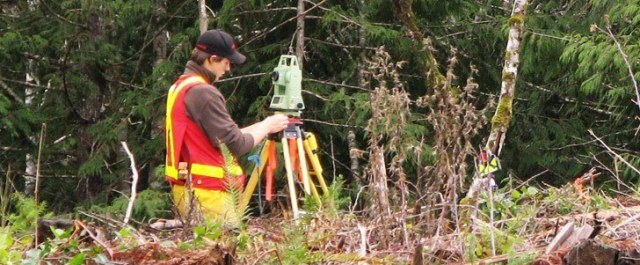
Types of Topographical Survey
Features typically shown on a topographic survey include trees, slopes and changes in elevation, streams and rivers, streets and walkways, buildings, fences and walls, manholes, utility poles, and more.
A mortgage survey is one type of survey you might have done on a piece of property you want to purchase. While a physical inspection focuses on the condition of the building, a mortgage survey investigates the property itself. Other reports include land surveys conducted by licensed land surveyors
A topographic review ranges from $500 to $1,200 for a lot size less than 10,000 square foot. It locates both man-made and natural features such as streams, trees, elevations, fences, and buildings. Governmental agencies, architects or engineers may require it before lot development.
Boundary surveys are typically performed to obtain building permits, to resolve property disputes, and for erecting fences. A topographic survey locates all improvements and topographical features such as elevations of the land, embankments, contours, trees, watercourses, roads, ditches, utilities, etc.
Surveying or land surveying is the technique, profession, art and science of determining the terrestrial or three-dimensional positions of points and the distances and angles between them. A land surveying professional is called a land surveyor.
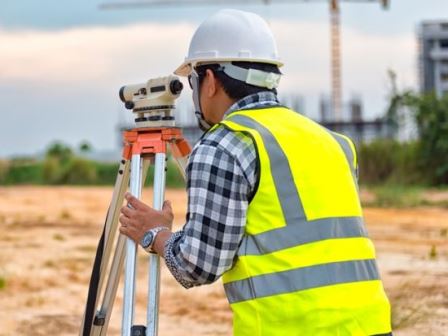
Topographic Survey Cost
As a home or property owner, you may need to inspect your land. What is the cost of the topographic survey?

Topographic Survey
Surveying has to do with the determination of the relative spatial location of points on or near the surface of the earth.
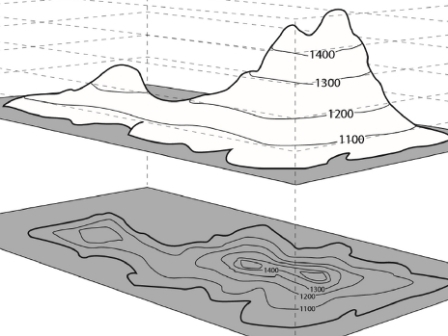
Topographic Map definition
Topographic maps offer detailed information on a particular area and are used for several types of activities such as emergency preparedness, urban planning, resource development, and surveying to camping, canoeing, adventure racing, hunting, and fishing.
